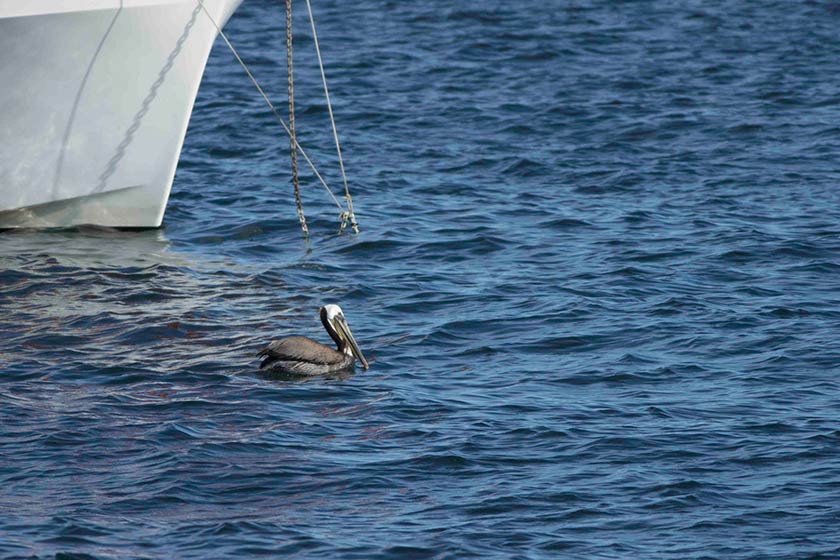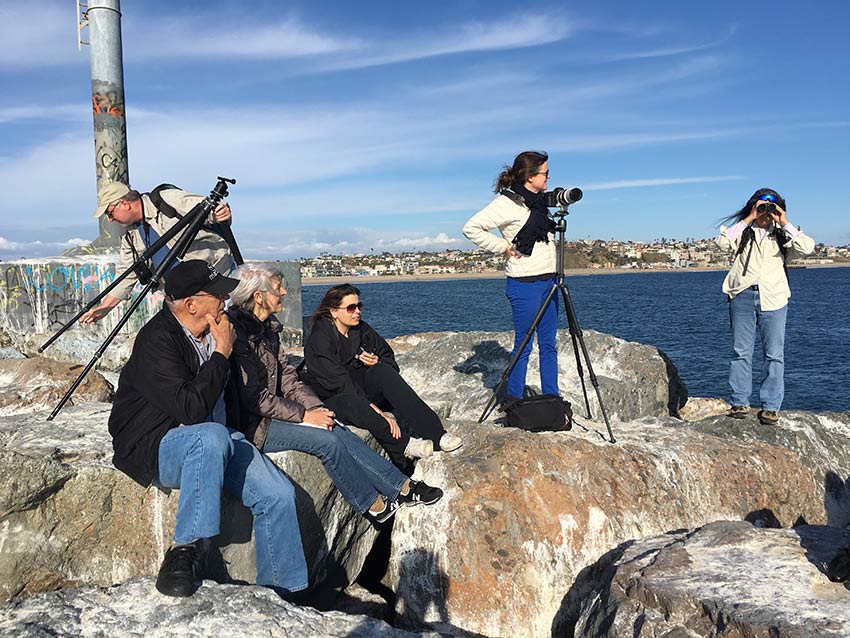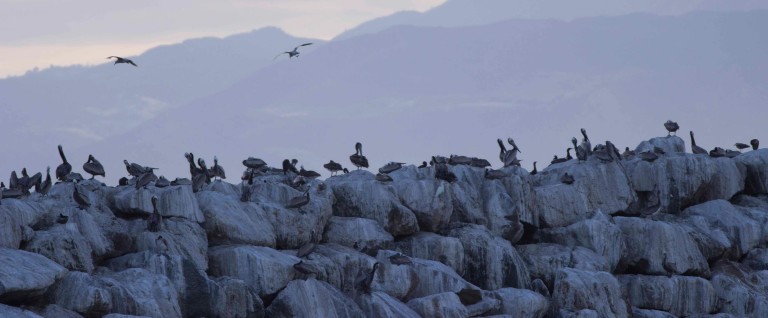 This past weekend brought many organized birding events to the city of Los Angeles. Audubon chapters from around LA coordinated the second annual Bird Day LA: a slew of bird/nature walks, photography classes, and a bar meet-up, all aimed to get the public excited about bird watching, nature, and conservation. Coincidentally, Audubon California decided to hold the first-ever Brown Pelican Survey on the same day. Due to my hectic school and work schedule, I decided to focus my time on Brown Pelicans.
This past weekend brought many organized birding events to the city of Los Angeles. Audubon chapters from around LA coordinated the second annual Bird Day LA: a slew of bird/nature walks, photography classes, and a bar meet-up, all aimed to get the public excited about bird watching, nature, and conservation. Coincidentally, Audubon California decided to hold the first-ever Brown Pelican Survey on the same day. Due to my hectic school and work schedule, I decided to focus my time on Brown Pelicans.
Status of Brown Pelicans
The Brown Pelican was placed on the endangered species list in 1970. Two pesticides, DDT and dieldrin, threatened pelican breeding by reducing egg shell thickness preventing bird embryos from reaching maturity. As the chemicals were phased out, the Brown Pelican population began to recover. In 2009, the pelican was removed from the endangered list and everyone rejoiced. However, since then, their food source (sardines and anchovy) have “collapsed.” This made the pelicans’ breeding less successful so the Audubon has committed to doing regular population counts to keep an eye out for any worrying fluctuations.
The first count
On May 7th, their first Brown Pelican survey was planned all along the west coast: from Washington down to Baja Mexico. I got an email from Audubon California and found out there was a local roosting site in Ballona Wetlands in Playa del Rey. I have been birding there a bunch of times and did a Christmas Bird Count there in 2014 so it was the perfect place to go and participate!

My friend Mubark and I drove down to the beach and met up with our counting partners Larry and Grace from the Santa Monica Bay Audubon. Our small group was responsible for counting the birds along Ballona Creek from 5-7pm. According to Grace, this timeframe was so we could count the birds as they began to settle down to roost for the night. Larry mentioned that they went upstream and didn’t see any Pelicans there, so we walked on the jetty toward the mouth of the creek. Out in the water, there was another huge isolated jetty where hundreds of pelicans and cormorants were chilling and relaxing.
We ran into one of the other small counting groups out there and helped with their counting. Larry brought along a spotting scope that made counting the overwhelming amount of birds much easier than if we just tried to use binoculars. The instructions were to make several counts during the time frame and report the largest amount of birds at any one given time. If possible, we were asked to record gender or age of the birds, and if any of them were wearing an IBR blue leg band. This proved to be extremely difficult because the birds were backlit by the setting sun and very far away. Grace made the first count at 5:45PM, she recorded a total of 212 pelicans.
Crows are a huge problem for local plovers: the birds are very smart and observe the mating/nesting habits of the terns, then swoop in, snag eggs, and fly off with them.
While biding our time before the next count, Grace told me stories about her nature and birding experiences. As a volunteer, she does a weekly population and status check of Least Terns and Western Snowy Plovers. There are tern colonies in a Venice Beach protected zone on the north side of the channel where the monitoring is done. Regular observations of these birds are done to track breeding, nesting, and assess any threats from predators. Local crows are a huge problem for these birds: the birds are very smart and observe the mating/nesting habits of the terns, then swoop in, snag eggs, and fly off with them. Another notable issue she mentioned was noise pollution from helicopters flying below the allowed altitude right over the colony. And sure enough, before the end of our two hours, we witnessed a helicopter wiz by right over the colony.
The Western Snowy Plover surveying is a joint effort between biologists and several Audubon chapters. The goal of the surveying is to estimate the number of wintering and breeding plovers at current, historical, and potential breeding sites over time. The participants collect bird band information, population counts, location, beach use, and predator data.

By the time Larry did the second count at 6:30PM, the number of pelicans swelled to about 340 birds!
After waiting a few more minutes, I got behind the spotting scope to do a count. The wind was blowing and caused a lot of vibration on the scope which made counting really hard. To make matters worse, I had to ignore the many cormorants that were mixed in with the pelicans. To my surprise, there was a bunch of sea lions sunbathing on the end of the jetting that were blending in with the rocks! My count came to about just shy of 300; this was with me being as conservative as possible. Bird silhouettes start to all look the same after a while. I have to give the other counters credit—it is no easy task!
The count is impossible to do with exact accuracy since pelicans are constantly flying around and landing or taking off.
My non-birder friend spent the whole time exploring the jetty and fishing. He befriended a local fisher and borrowed a piece of fishing line to try his luck at catching something. After tossing his line in and being patient for a while, he snagged a fish! It was a decently-sized Rockfish. You could hear him yell out in excitement when he reeled it in. He gave the fish to his new friend as a thank you (how would we get it home anyway?).
While he was trying his luck at a second fish, he fumbled and dropped the line into the water. His fisherman friend came over to help retrieve the line using his own pole. After struggling for a few minutes he successfully recovered the line. It is very important for fishers to not let any fishing line escape into the water because birds and other animals can easily get tangled up and injured. I saw so many ensnared birds come into International Bird Rescue with line tied up all around them, it was devastating.
After the count was finished, each group was instructed to submit their count data into eBird for historical purposes.
To be notified about upcoming conservation projects and news, subscribe to the Audubon California newsletter.
For more information about the volunteer opportunities with Western Snowy Plovers or Least Terns, view the Los Angeles Audubon.
